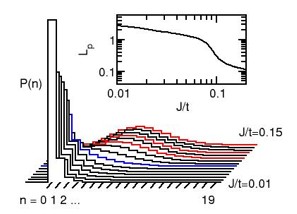Statistical physics modeling of social dynamics
In recent years it has become widely recognized that many large-scale phenomena observed in social systems are the “macroscopic” complex effect of the “microscopic” simple behavior of a large number of interacting agents. This has led social scientists to the introduction of elementary models of social behavior (cellular automata, agent-based models). Many of these models are somehow relatives of models that have been introduced in modern traditional statistical physics, and it is natural to approach them using the same concepts and tools that have been successfully applied in physics.… Read the rest


![Fig. 1: electronic structure of graphene and Dirac-like dispersion. After A.H. Castro Neto et al., arXiv:0709.1163v2 [cond-mat.other] (2007). Fig. 1: electronic structure of graphene and Dirac-like dispersion](/wp-content/uploads/2017/07/dirac_graphene.jpg) A large interest, for its potential technological applications, concerns the investigation of optical and transport properties of both single-layer and multi-layered graphene, which are dominated by its so-called relativistic Dirac-like electronic structure (see Figure on the right).
A large interest, for its potential technological applications, concerns the investigation of optical and transport properties of both single-layer and multi-layered graphene, which are dominated by its so-called relativistic Dirac-like electronic structure (see Figure on the right).